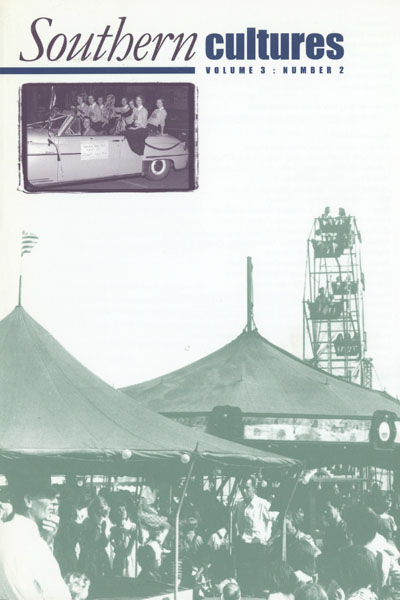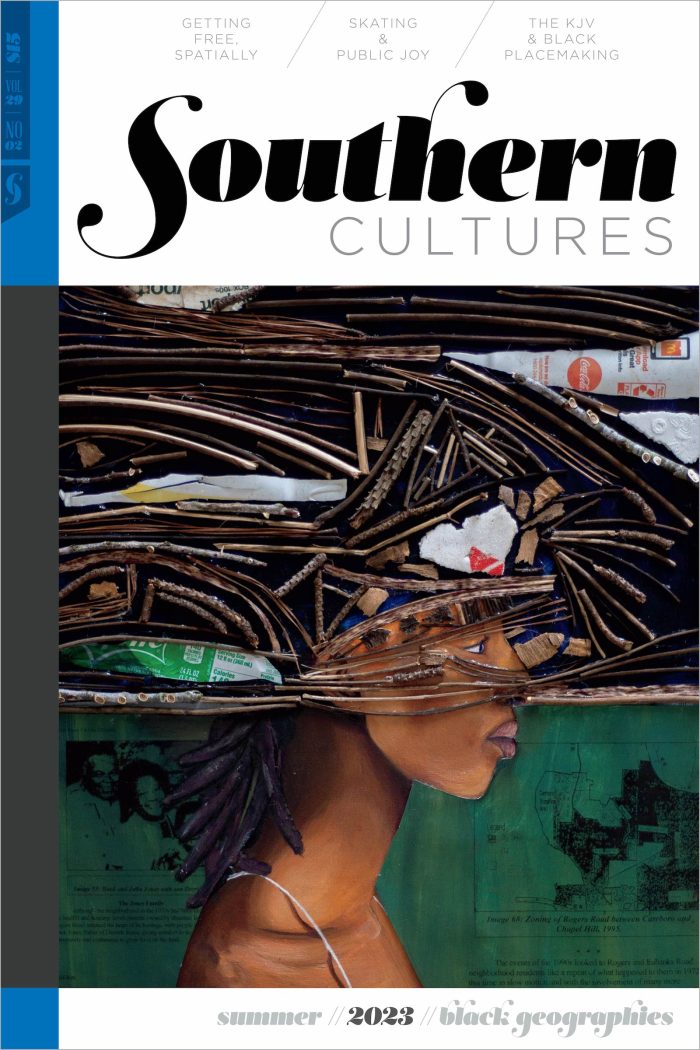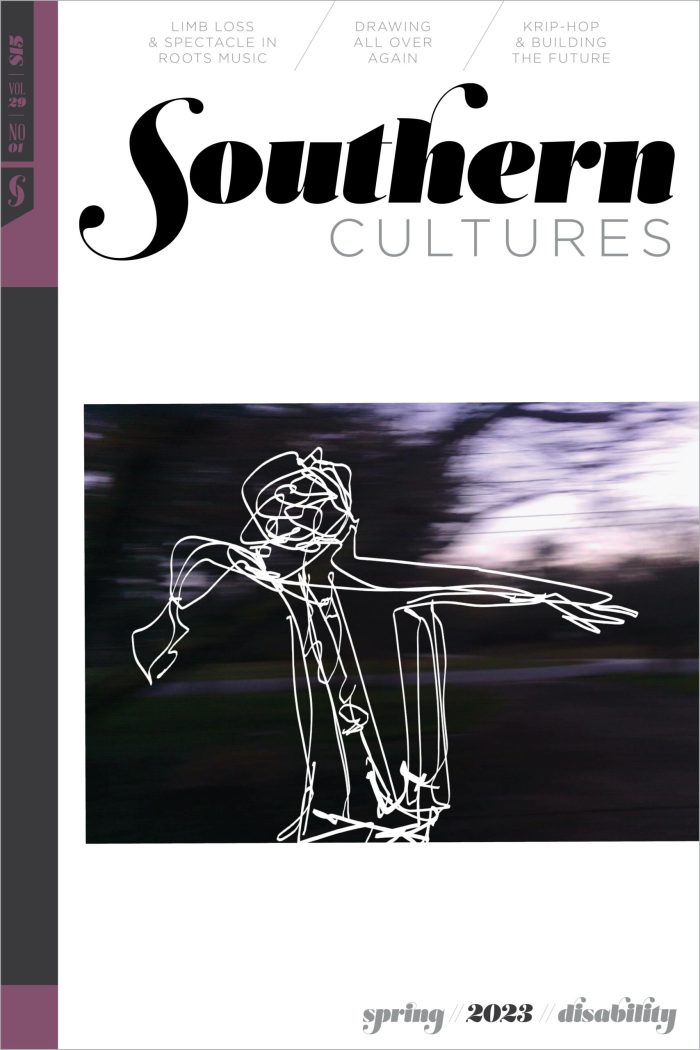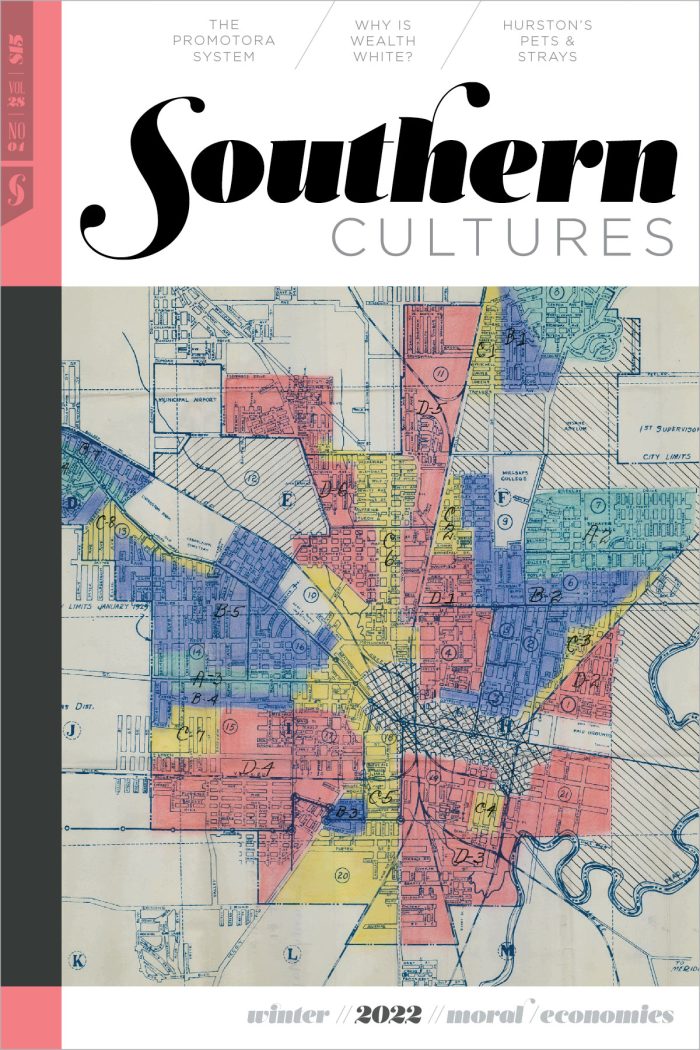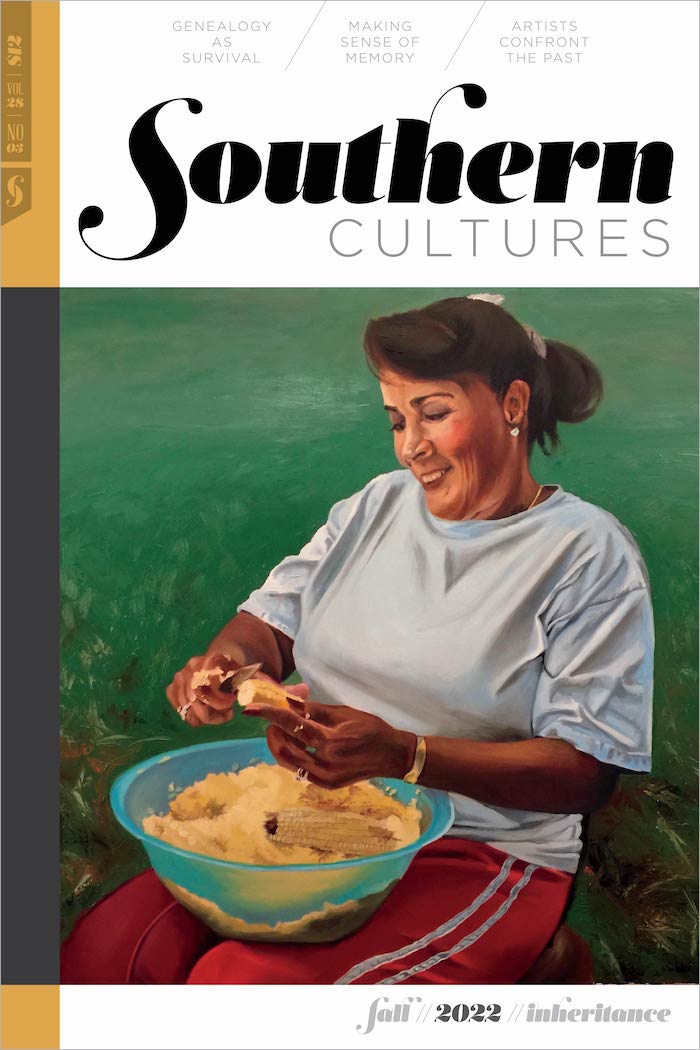BUY ACCESS
by Harry L. Watson
“What happens when one person looks at the art of another?” What happens when one person looks at the art of another? James Henry Hammond, an ambitious planter-politician of antebellum South Carolina, got one very depressing answer in 1841 when he threw open his dazzling new house to a select circle of Columbia’s most cultivated »
BUY ACCESS
by Melton McLaurin
“What can the autobiographies of black and white southerners coming of age in the segregated South tell us about race?” In Lillian Smith’s Our Faces, Our Words, a young northern-born and -educated African American come south to join the civil rights movement reflects upon his experiences in the field with southern youths, black and white. »
BUY ACCESS
by "North Carolina's writers respond with new fiction, poetry, and essays to works in the North Carolina Museum of Art collection." Editors
“North Carolina’s writers respond with new fiction, poetry, and essays to works in the North Carolina Museum of Art collection.” Its title borrowed from a Sir Walter Raleigh poem, The Store of Joys is a lively anthology of previously unpublished poetry, fiction, and nonfiction written in response to paintings and sculpture in the North Carolina »
BUY ACCESS
by Allan Gurganus
“In such heat, this mission sickened him. The killing had been simple, it felt country-necessary, country-right.” And, verily, the head did weigh twenty-seven pounds. And to hold it before him—as you would lift a lantern—costs the young David much strength. Was not his day’s strength already well used by killing so great a warrior? Trumpets »
BUY ACCESS
by James Applewhite
“I feel it melt into a world where sun conceals its shade, and seasons pass.” What shadows my happiness? The boy and calf so linked bya rope seem to forget all else. Grass recedes to the horizonand chickens roam free. Hay stacked richly as memory bulgesmountainously on the sky.
Memoir
by David Sedaris
“Through Mrs. Kingman we learned to identify Rubens’s The Holy Family by telling ourselves the plump, satisfied Christ child was sleeping off the effects of a sandwich.” This essay initially appeared in vol. 3, no. 2 (1997) and in The Store of Joys: Writers Celebrate the North Carolina Museum of Art’s Fiftieth Anniversary. Each year »
BUY ACCESS
by Robert Morgan
“But perhaps the greatest discovery for me was the city of Raleigh itself.” In 1962 I entered North Carolina State in engineering. I had attended Emory College at Oxford, Georgia, for one year, but since I did not have a high school diploma, State ranked me as a freshman. I was a farm boy from »
BUY ACCESS
by Doris Betts
“All the time I was growing up in Statesville, I never went to an art museum. There was none; the weekly art teacher in public schools contented herself with the color wheel and the hope of proportionate good likenesses.” All the time I was growing up in Statesville, I never went to an art museum. »
BUY ACCESS
by Lynn Moss Sanders
“Two friendships lead to an understanding of black culture and broaden a southern progressive’s view of race.” In the 1920s southern sociologists Howard Odum and Guy Johnson saw folklore and race-relations studies as ways to practice Christian good will toward their fellow human beings, but their “good wishes” did not preclude stereotyping the subjects of »
BUY ACCESS
by Peter A. Coclanis
Photo by Peter A. Coclanis
BUY ACCESS
by Peter H. Wood
Smithsonian Institution Press, 1996 Who is Louis Rémy Mignot? In 1983, when the Virginia Museum in Richmond launched the comprehensive exhibition “Painting in the South, 1564-1980,” this Charleston-born artist was not represented. The exhibition included Florida sunsets by Vermonter William Morris Hunt and by the Pennsylvania luminist Martin Johnson Heade, who took up residence at »
BUY ACCESS
by Michael Kreyling
University Press of Virginia, 1996 Cleanth Brooks (1906-1994)- in his later years when his hair had turned shiningly white and when, as his biographer Mark Royden Winchell amply notes, his blue eyes actually did seem to “twinkle”- bore a resemblance to Clarence Oddsbody, the angel sent to rescue George Bailey from despair and suicide in »
BUY ACCESS
by John Charles Chasteen
University of Alabama Press, 1995 The title says much about this book. It suggests that the Texans and the Alabamans at the center of the story are not so much romantic exiles or incorrigible slavocrats as migrants much like other migrants. They are Confederados, defines in part by their Confederate past, in part by their »
BUY ACCESS
by Timothy J. Lockley
University of North Carolina Press, 1995 Marvin Kay and Lorin Cary’s new book is an important study of the system of slavery in colonial North Carolina. As the authors correctly point out, most monographs on slavery concentrate on the antebellum period, often focusing exclusively on the last twenty years of southern slavery. This bias in »
BUY ACCESS
by Joseph M. Flora
Duke University Press, 1995 In God’s Trombones (1927) James Weldon Johnson pays eloquent tribute to the sustaining presence of black ministers for their parishioners, both during slavery and following it. William Faulkner concludes The Sound and the Fury (1929) by reaffirming the spiritual presence of the black preacher, showing the black church as the last bastion of Christianity in »
BUY ACCESS
by Loyd Little
University of North Carolina Press, 1996 Around four in the afternoon on 12 July 1996, the wind of Bertha reached a maximum of 105 miles per hour at our home on the mainland side of Bogue Sound across from Salter Path. The plywood was up; the boat and car had been moved to high ground; »
BUY ACCESS
by Anne L. McClanan
New Orleans Museum of Art, 1993 The exhibition catalog Passionate Visions of the American South embraces a diverse and engaging assemblage of contemporary plain artists. From 1993 to 1995 the exhibition traveled to New Orleans, Berkeley, San Diego, Washington, D.C., and finally to Raleigh; the accompanying catalog is a substantial volume. Although it relies too heavily on »
BUY ACCESS
by John Shelton Reed
“Although the southern mother doesn’t have the national fame of her Jewish counterpart, she has been celebrated locally in novels, verse, folklore, and song.” Although the southern mother doesn’t have the national fame of her Jewish counterpart, she has been celebrated locally in novels, verse, folklore, and song. And when we’re referring specifically to a »
BUY ACCESS
by Gavin James Campbell
“By the last tune, singers have indeed made ‘heaven’s portals ring.'” In 1921 Herbert McNeill Poteat, professor of Latin at Wake Forest University, had heard enough: the abominable condition of southern hymnody must be corrected. Despite the large number of edifying denominational hymnals, he complained, the singing public seemed bent on supporting a horde of »
BUY ACCESS
by Patrick Huber
“There, I’d gulp down icy Stag drafts, shoot a few games of eight-ball, and occasionally eat a pickled egg or two with old high school friends.” Every year I make at least two trips to visit my parents in Ste. Genevieve (pop. 4,411), a predominantly Catholic, mining and farming town in southeastern Missouri. Until it »
